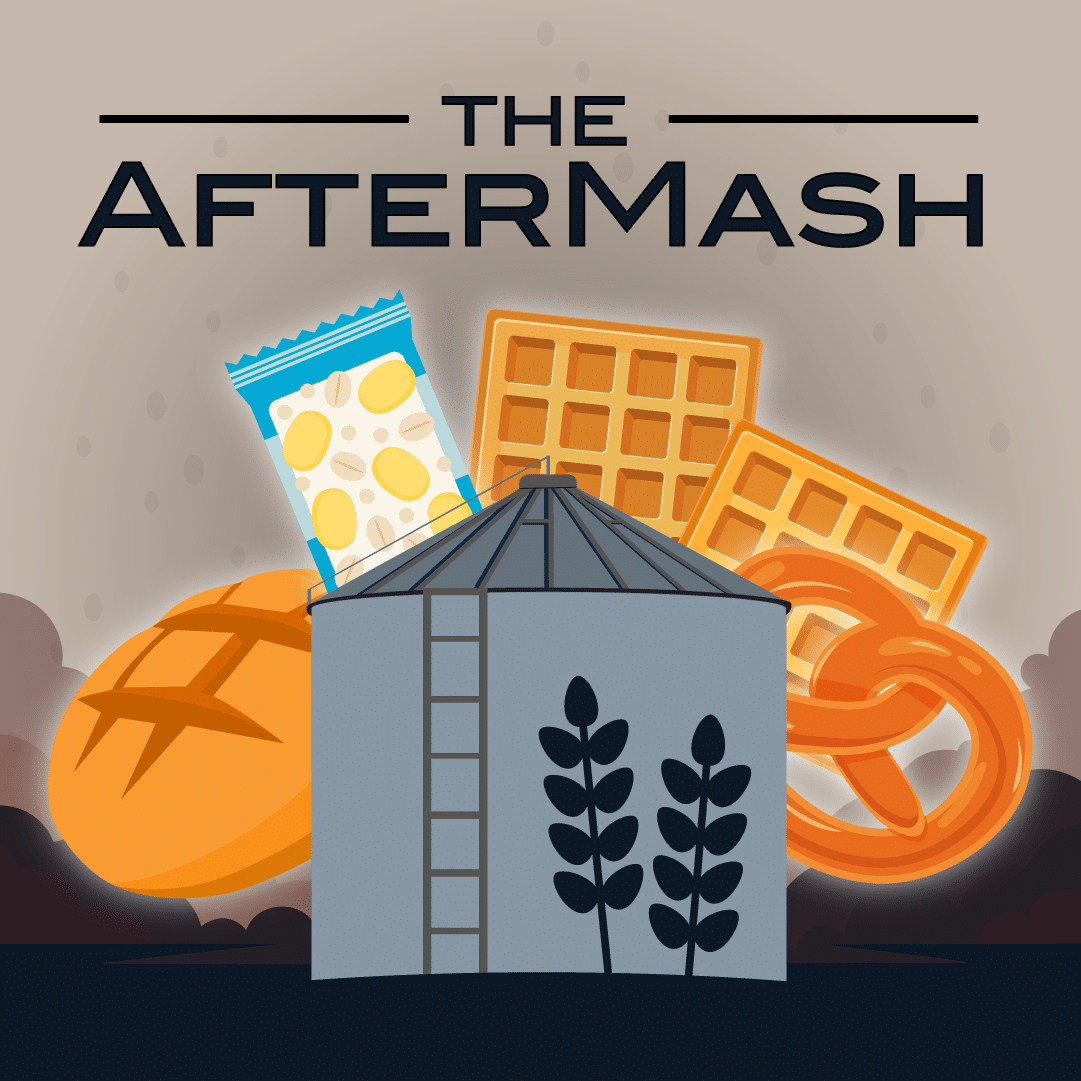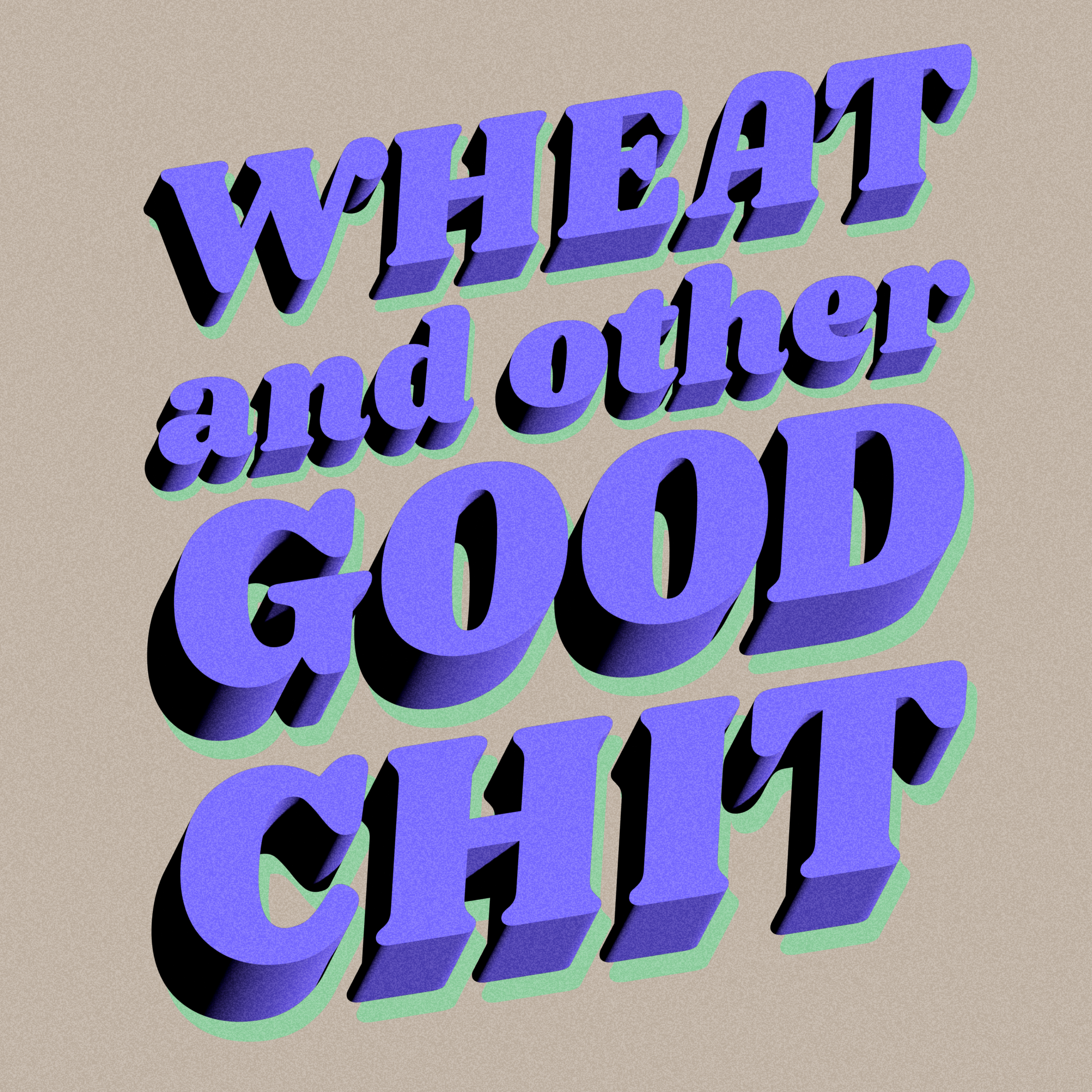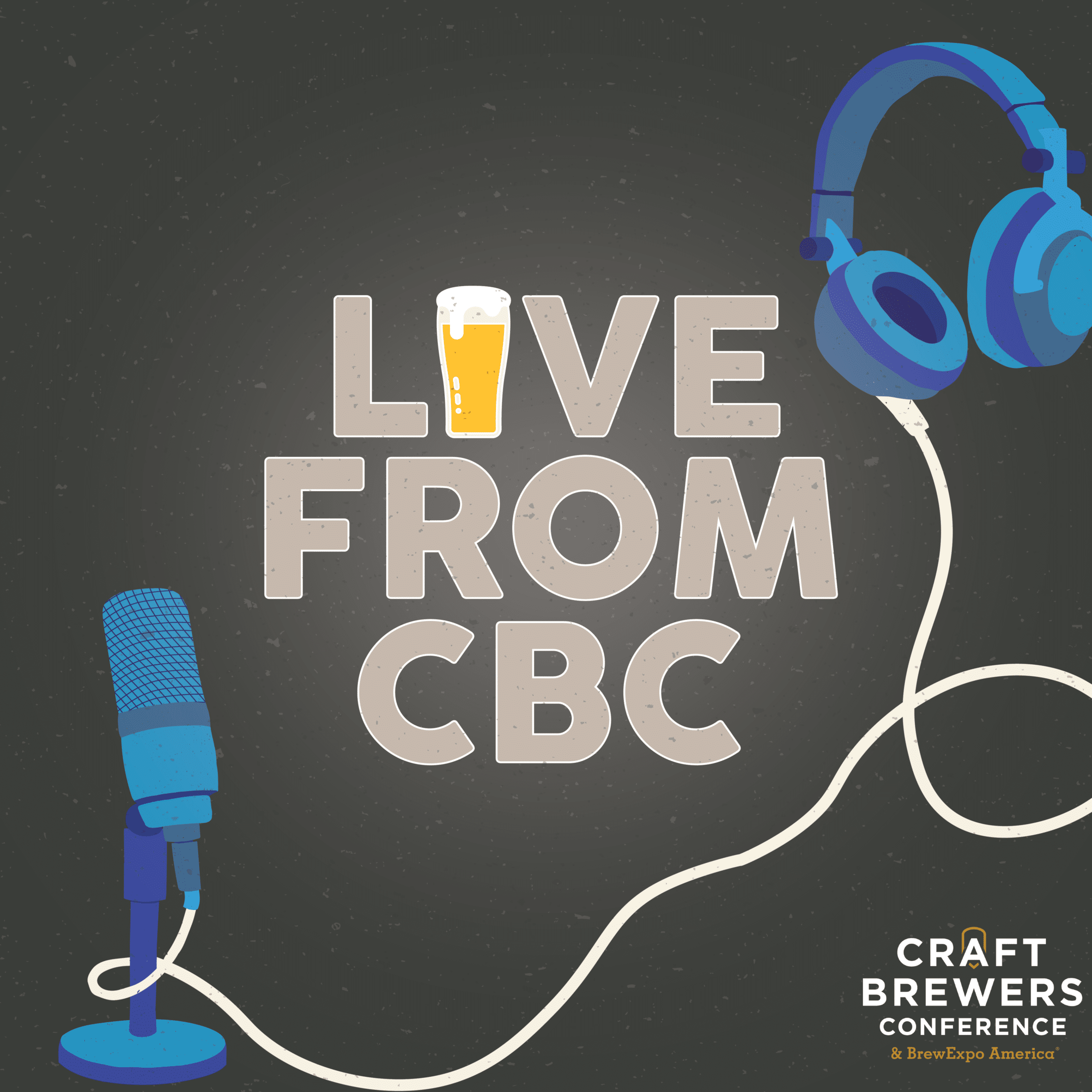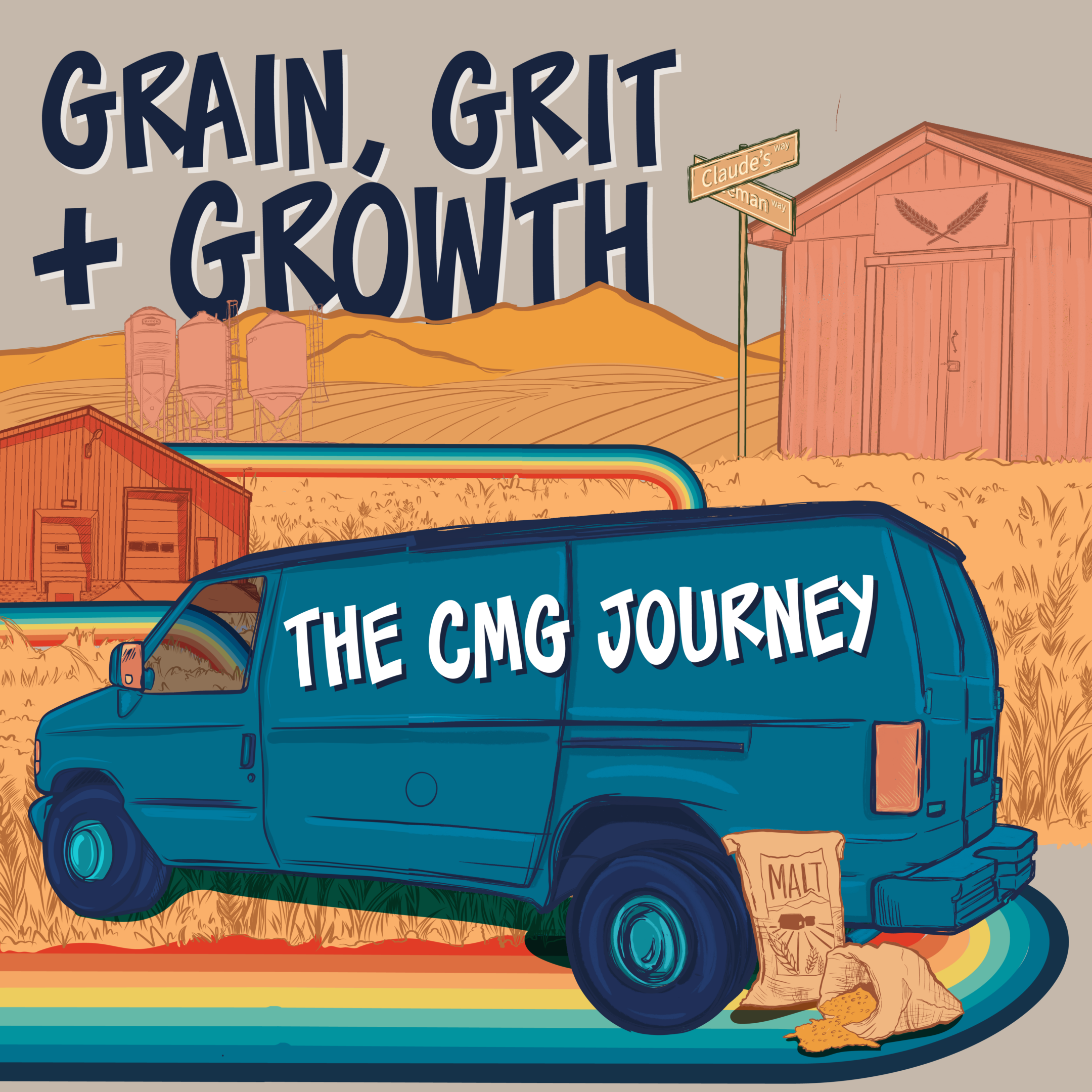
PODCAST GUESTS
Brian Perkey

MORE EPISODES
SEASON 3, EPISODE 9: THAT’S THIOL FOLKS!
PODCAST HOSTS:
TOBY TUCKER – DIRECTOR OF SALES, COUNTRY MALT GROUP
HEATHER JERRED – TERRITORY MANAGER, COUNTRY MALT GROUP
GRANT LAWRENCE – TERRITORY MANAGER, COUNTRY MALT GROUP
GUESTS:
BRIAN PERKEY – NORTH AMERICA SENIOR KEY ACCOUNT MANAGER, LALLEMAND BREWING
Key Points From This Episode:
-
Are thiols just a buzz word? Thiols are a new and deeper understanding of the process of biotransformation and understanding it is not just glucosidase that are contributing to these crazy, juicy aromas.
-
Thiols are another name for a specific group of sulfur compounds also known as Mercaptans. Flavors/Aromas of thiols in sensory have much lower thresholds than many other compounds.
-
Where are thiols found? Thiol precursors are found in higher concentrations in specific hop varietals and in malts that are lightly kilned, but yeast does not have thiols. Certain yeasts contain the right enzymes to unlock these tropical thiol flavors from their malt & hop derived precursor compounds.
-
What is Phantasm? Dried ground grape skins loaded with thiols.
-
Which three β-lyase specific yeasts can be used for thiol release: BRY-27 American West Coast Ale Yeast, Verdant IPA Yeast, and LalBrew Nottingham™ Performance Ale Yeast.
-
How to get the thiol flavors and aromas you are after: lean towards lightly kilned malts for your grist bill, use high thiol pre-cursor containing hop varietals such as cascade via mash hopping during brewing, and finally make sure to use yeast strains that can cleave up the thiols to make them soluble in the finished beer.
Transcript - That's Thiol Folks!
EPISODE S.3, E.9
[THAT’S THIOL FOLKS!]
Toby (00:09):
Welcome to another episode of The BrewDeck Podcast. Happy to have everybody back with us this week for another episode. Again, with me today, I’ve got Heather Jared. How you Heather?
Heather (00:23):
Hi you all.
Toby (00:24):
And Grant Lawrence, both territory managers with us. So happy to have you all along for the ride again. Pretty excited about today, but also a little intimidated as well. This is a subject we’ve been poking at for about the last two weeks, and we’re probably not, I know we’re not the first to bring this to the forefront, nor have conversation by way of podcast, but certainly an interesting topic that I know Heather and I, we mentioned earlier that we will put our dancing shoes on and attempt to wrap our heads around this subject here. But we do have an expert, a guy that’s been around for quite some time, and really knowledgeable individual over at Lallemand. Brian Perkey, how are you?
Brian (01:14):
Happy Friday. I’m great.
Toby (01:15):
Yeah, hopefully he’s going to just blow our minds with stuff that might go over my head.
Heather (01:22):
Or my head.
Toby (01:26):
Yeah, no, but it is, it’s one of those subjects and it’s interesting, I was thinking about what the actual topic of this is, right? Because we talked a little bit before we hit record here about some of the subject base. I mean, we intended on going into this podcast talking about thiols, but I think by the end of the conversation it’ll morph into several different things. So super excited. Welcome again, Brian.
Brian (01:52):
Hey, I appreciate you guys having me on. And this is an intimidating topic because it’s so relatively new, the concept of thiols and thiol yeast and what it means to a brewer in these days of juicy IPAs.
Grant (02:15):
Yeah, absolutely.
Toby (02:16):
Well, I got to tell you, Brian, you joined our group at CBC to talk a little bit about your products, but I was super impressed in that, I just want to tell you kind of off topic here, but this solution based approach that you have to taking care of customers, I got to tell you, it was awesome to have you there, and it’s good to hear from vendor partners of ours and other peoples that are in the industry and taking care of customers, that you really pride yourself on that solutions approach. So, pretty cool. And so that said, tell us a little bit about you, your background, and what you’re doing currently over at Lallemand.
Brian (02:59):
Right on. Well, that was fun out at CBC and I appreciated the time to chat with you guys. We work in sales, but really what we want to do is help folks make the beer that they’re after and help make better beer. So we want to sell you the widget, but more importantly, we want to teach you how to use it. And I’m still learning stuff. This whole topic of thiols is really an opportunity for anybody who’s been in the brewing game to learn something new and achieve a deeper understanding of what’s going on in the tanks.
(03:49)
I started in 1992 working for Bridgeport and came in on the packaging line and have worked my way up from there. But I was interested in getting into the brewing because I had some relatives that were moonshiners. And so hanging out around the still as a kid, not knowing anything, but once I took a walk into a brewery, it’s like, oh, this is familiar. I have no idea what’s going on here, but I’m excited to learn. And over the course of 18 years, I spent that time in production before I’ve really been on the sales and the service side ever since. Five years now with Lallemand as first regional sales manager and now senior key accounts manager. But then prior to that, also working for Muntons Mall out of the UK and YE’s Laboratory. So here locally. So I’m 30 years deep and kind of screwed at this point.
(05:03)
I don’t think I could or wouldn’t want to do anything else. So when stuff like this comes up, it’s really, it’s exciting for me and for the rest of us on the Lallemand team because really we all come from the industry. We all have a brewing or a beer science background. And so going back to that solutions thing that we were touching on, it’s like, yeah, I mean we need to make a sale, we need to make a buck, but what we’re really here for is to be a beer geek like the rest of the crowd. So that’s a bit about my background.
Grant (05:46):
I also got to say, you’ve got to kick to mustache as well. Two thumbs up to that thing.
Brian (05:52):
Thank you. Appreciate that.
Toby (05:54):
Well, I guess we just dive right in. So the first question I wrote on here, and it’s a terrible question, but it’s a valid question. What the heck is a thiol and how did this become a hot topic? Mic drop, shows over, that’s it.
Brian (06:13):
Yeah, yeah. No, that’s a great question is what that is, because again, it is so new, and when I say new and we’re talking within the last couple of years, it kind of is a buzzword. What thiols are really, when it comes down to it, they’re a class of some really potent sulfur containing compounds. And they can exist in both a free and a bound form. And we’ll talk a little bit about that in a bit and what those forms are. They’re similar to glycosides. Now, glycosides are what we’ve all been jumping in on when it comes to the topic of bio transformation. We’re releasing hop aroma compounds from a bound molecule, and this is what the whole late edition or hot side, not hot side, hot side on the fermentation side prior to the crash, addition of hops to get these big juicy bombs. And this comes off the as end of the New England IPA craze.
(07:35)
So what thiols are is really a new and recent and deeper understanding of the process of bio transformation and understanding it’s not just glycosides that are contributing to these crazy juicy aromas that we’re getting off of these types of ferments, but it’s actually an additional, or again, deeper understanding of what’s actually happening in the fermentation. So these free and bound forms of thiols, which are all the talk has really been on hops, but they’re also found in some malts. Now, malts that are lightly kilned, so more base malts have some of these thiols present. So now we’ve got two sources of a component that we can then use later down in the tank. But the third trifecta here is the yeast. So you need yeast specifically with the type of enzyme, beta-lyase enzyme or what is it? IRC7 is the actual gene kind of buried within the yeast. But this beta-lyase is the actual cleaver that releases these thiols into the beer and that’s where you’re getting these aroma compounds.
(09:29)
Now, when I said earlier that they’re sulfur containing compounds, I mean, what you get from a papaya or that dank tropical fruit that’s finer and frog’s hair from turning into something that’s like skunky or rubbery. The flavor threshold of thiols are, it’s much lower than flavor compounds like Myrcene or Linalool or the other hop compounds that we know contribute to citrus and other fruity flavors that you get out of hops. So kind of playing with fire here a little bit when you’re monkeying around with thiols. But those folks that have figured it out, it creates a different layer, a different level of complexity to these juicy hot bombs. And you can get it dialed in because we know this from the wine industry. Think some of the whites.
Toby (10:48):
Sauvignon Blanc.
Brian (10:49):
There it is. Thank you, thank you, thank you.
Heather (10:51):
And recently I think.
Toby (10:51):
Recently, yeah.
Heather (10:51):
Yeah.
Brian (10:54):
So these are richer thiols as well. And it’s taken winemakers a while to get that figured out and dialed in on their production process.
Heather (11:06):
So is this all kind of born from the wine industry?
Brian (11:11):
I don’t think so. It’s not born from, but there’s certainly some correlations that we can learn from. Where it’s born from is really folks diving deeper into understanding bio transformation in beer. And we’ve been monkeying with this for a long time. I mean, mash hopping or first work hopping, I mean this has been around for 15 years or so, but what guys were, or gals were looking at in doing was achieving a better utilization of the hop for bittering. So that was kind of the focus. And maybe some folks figured out that, oh, well maybe my pale ale or my IPA, double IPA, whatever it is that they were trying to make back then before the New England and the juicy thing was a thing. Maybe it had a little different complexity or a different type of aroma, a hop character. But there was no science really available to understand what was happening and why that beer was coming out the way it was.
(12:35)
And that’s what folks have been working on. Obviously the yeast guys are on this. And again, it comes on the back end of the understanding the glycosides and what hop creep was, if you remember the issues of around hop creep, I mean that kind of started peeling back the layers of understanding. So that’s where all this research comes from.
Toby (13:07):
Yeah, I think I read somewhere that Sapporo did a bunch of work on it in the past.
Brian (13:12):
They did, yeah.
Toby (13:13):
Looking specifically at hops high and Linalool and Geraniol, like in Bravo Nugget and kind of mixing it with a Chinook to try to maximize that fruity tropical. And it kind of morphed into, it’s not specifically looking at a blend of those two and really found out some really good information about thiols. But going back, Brian, you mentioned the low concentration of thiols, right? I think I read there’s less than 1% of all of the compounds, so to speak, in a hop could be considered like thiol. So it’s very, very hard to detect and I think that’s limited what, not only on the malt side, but I think hop and otherwise trying to find a way to detect and actually quantify how much of this is in particular raw material, right?
Brian (14:16):
Yeah. And so much of it is because much of these thiols are bound, right? So let’s talk a bit about a free and a bound form of thiol and how yeast can access these to produce that punch. And sorry for the term, but that’s Omega’s, they call it a thiolized yeast, it’s Cosmic Punch. But what it is, it is a punch in the face when you get these sulfur compounds to unlock. And when I say that’s low threshold, meaning it doesn’t take much for you to notice.
Toby (15:01):
Flavor thresholds.
Brian (15:02):
Pardon me?
Toby (15:03):
The flavor threshold is just really low. We’re really sensitive to those sulfur compounds, right?
Brian (15:08):
Correct, correct, correct. But if your thiol is in a bound form, then you won’t get it to release and express itself in the finished product. And how you get a bound thiol basically to release, there is an enzyme in barley that assists in turning that from a bound form to a free form. I can’t remember the name or the term of the bound thiol but the free form is I think a glutathione or thien. And then once that thiol is free, then you have to utilize a yeast strain that expresses high in beta-lyase to cleave that free. And these are bound to amino acids or small peptides as opposed to sugars in the case of a glycoside. So that’s why a barley enzyme, and I don’t know which one it is specifically, but that assists in the release of these thiols. Now, what some of the yeast manufacturers have done on the bioengineering side is created these yeast strains that they’re not adding anything into the gene sequence. What they’re doing is they’re just accentuating what’s already there, this IRC7 gene beta-lyase enzyme.
Toby (16:56):
And turning things that are just naturally off, turning them on with CRISPR, right?
Brian (17:04):
Yeah, yeah. There are yeast available that express high in beta-lyase, so you don’t necessarily have to go with the GMO option. I mean, we’ve got a few in our stable, but all of the yeast manufacturers should be typifying their yeast in these enzyme expressions and more importantly how they perform in a nitrogen rich [inaudible 00:17:31] wart environment. Because in some cases that nitrogen can actually turn that gene off, that expression off, even though the yeast does express high in beta-lyase. I mean we’ve done it at Lallemand. I know a couple of the other liquid guys have done this work as well.
Toby (17:54):
Correct me if I’m wrong, but isn’t it kind of like your classic West coast IPA yeast or West coast yeast tends to do better with the beta-lyase?
Brian (18:06):
You’re right. So in our case, in Lallemand’s case, it’s the BRY-97, right? Our expression of the Chico strain. Also, our Verdant expresses high in beta-lyase, as does our Nottingham believe it or not.
Toby (18:26):
Huh, okay.
Brian (18:28):
And then also what I found through this work is most like your Bavarian Hef strains or your phenolic Wit strains, these also express high in beta-lyase. But I mean, we haven’t done any work other than that in terms of actual, we don’t have a little test brewery in our lab in Montreal where they do a lot of this assay where they do a lot of this work. And we haven’t really looked at producing a straight beta-lyase like we do with the aroma [inaudible 00:19:07] eye, the beta-glucosidase, for dealing with the glycoside side of bio transformation. We just have it, I guess, jumped into the deep end of the pool here yet with beta-lyase.
Toby (19:19):
Yeah, yeah. I mean it’s still all very new. I was thinking about what malts would have these thiol precursors the highest, and then I was just like, well, they’re sulfur compounds. So I mean, I would imagine it’s lighter kiln malts, but I mean it’s kind of a blue ocean, thiols are kind of a blue ocean. We don’t know what all’s out there yet. We’re just now learning about it as a industry really. It’s really cool.
Brian (19:45):
And what the cool thing is, I mean, I see what we’re doing on the yeast side of things here, but the hop guys have gotten way on board with this. So now I think it was at the last NBA gig in Hood River. I got a book from, I think it was YCH, about how they’re typifying their hot varieties and the contribute with the precursor, and there’s a term for it.
Toby (20:22):
It’s 3SH is the soluble one, right?
Brian (20:27):
Yeah. There it is.
Toby (20:28):
And then the precursor is 3MH?
Brian (20:30):
Yeah. A thiol potency indicator. That’s what I was after. Yeah. They’ve gone through or starting to go through and provide data sets on the varieties of hops, and surprisingly enough, it’s some of the old school classics. Cascades, centennials, chanos. Yeah.
Toby (20:56):
Yeah, and it’s funny how that works.
Brian (21:00):
Right? Which I think is great because if you’re an old school guy like me or just old, I’m not a New England fan, so I never brew those beers. I’m certainly not buying or spending the money on maybe some of the rare or more expensive variety of hops, a cheat or typically used to get that big tropical punch in your face. So to utilize what I have in my freezer to make one of these beers, just monkeying around, now I have the opportunity just from a basis of understanding on how to achieve that papaya result should I so choose. And I think that’s what’s fun for the brewer, is this is now another kind of procedural tool in the belt that you can utilize in order to achieve the result. What do you want your beer to be? Isn’t it fun?
Toby (22:07):
Yeah. I mean it’s funny to me because it’s talking about things that are the go circle or trends that come around, fashion trends that come back after a certain time. It’s like, okay, we’re mash hopping and we’re mash hopping with cascade. Okay. It’s just like old becomes new again.
Brian (22:28):
Yeah. And I think this will transcend thiols being a buzzword or being a trend and that it becomes a tool. Maybe you want to use this tool, maybe you don’t. I mean that’s up to the brewer to decide. Some guys have gone through this process or some folks have gone through this process and be like, eh, not really seeing any big difference. Not really, not worth the time. Some folks are swearing by this. I think Omega, I think Escarpment has a thiolized yeast. And by the way, there are no thiols in yeast. So the thiolized yeast, that’s good marketing and you can see what it’s being used for. But just so everybody understand it, yeast doesn’t have thiol.
Toby (23:29):
It’s just yeast that have-
Brian (23:35):
The ability to.
Toby (23:37):
… a gene to make it the right enzyme to take thiol from insoluble to soluble?
Brian (23:42):
Correct. Correct. Correct. To cleave that lock, that bond. So this will be around a long time. And I think we talked about earlier now this is a chance for you guys as maltsters to kind of join the party when it comes to the topic of bio transformation. It’ll be interesting to see in the coming years, because undoubtedly you guys are going to, the maltsters are have to go down the path of providing some data on the kiln malts. And the thiols in malt or the precursors in malt, they’re only in the lightly kiln stuff. Once you get into, and fresh is best for whatever reason there, I think that there’s an oxidative reaction that can occur in malts that are stored, reduce the level of thiols or thiol precursors. You sent me that email Heather, so I started digging around and Charles Bamford has a article from 2018 that you can find online where we’re talking about storage of malt and thiol oxidase and what happens to the malt under storage. So there’s going to be some correlation to thiols available for fermentation there in time.
Grant (25:25):
That’s interesting because I reached out to some of our lab folks at Canada Malt and Great Western in preparation for this. And they’ve heard of them, but they don’t have any current-
Brian (25:41):
Avenues.
Grant (25:42):
… avenues for testing. And the first thing that one of them said is this something that you see value in us researching for the future? And so it sounds like certainly something that is worth continuing down that path.
Brian (25:56):
Yeah, you can go through a congress mash and get the lab specs and then a flavor sample, but your base malt can produce papaya or tropical flavors by executing this process is just, it’s mind blowing. I love it.
Grant (26:19):
It’s like a quiet, everyone’s like processing what’s happening here.
Heather (26:26):
It’s a lot of information.
Brian (26:28):
Right. Yeah. So I think the big takeaway here is this is a round stay, again, it’s another layer of understanding, deeper understanding when it comes to that bio transformation concept process. And malt now has an opportunity to join the party.
Toby (27:00):
Do you know of any breweries that have taken a stab at focusing, and maybe it’s a marketing thing, but really focusing on thiols in a particular beer?
Brian (27:15):
Yeah.
Toby (27:16):
One of our good customers, WeldWerks, I know that’s got to have been a year ago, but had a beer called Advanced Fluid Dynamics with something called Fantasm. I didn’t try it.
Brian (27:27):
Okay, so Fantasm is, that is a musk product, which I think is, it’s like dried ground.
Toby (27:37):
Grape skins.
Brian (27:38):
Grape skins, but it’s just loaded with thiols. So the addition of that upfront is that they’re basically given something for that yeast to chew on and to cleave. So that will punch it up. Remember Brute IPAs or the Italian Pilsners?
Toby (27:57):
Yeah. They mixed in.
Brian (27:57):
What’s that?
Grant (28:02):
I’m a big fan personally.
Brian (28:03):
I knew Belgian made the best one that I’ve ever had. It was delicious. But I mean they’re incorporating kind of that scene, bringing grape skins into the mash to provide these thiols and thiol precursors.
Toby (28:23):
We had somebody that we referenced last week talking about the awards over CBC, somebody who’s mentioned that they were playing around toying with Great Musk and can’t recall who that was.
Brian (28:40):
Yeah, I was up in Sunnyside, Washington. Was it yesterday? Day before yesterday. And there’s a brewery up there. The name of their beer was called Talking Points.
Toby (28:57):
Oh, that’s awesome.
Brian (28:58):
Yeah. And it was this full exercise into thiols. They didn’t use this Fantasm, but they did use, I think a Cab Sauv skin or Sauv Blanc skin. I mean, they’re up there in wine country there, so I’m sure they got a neighbor that hooked them up with some musk. I mean it was tasty, it was juicy, but I went for the West Coast IPA instead. Like I said, I’m old.
Grant (29:33):
Nobody’s old around here. No.
Toby (29:38):
Well cool. Now this is all good stuff. And so I know you mentioned some of the options you have or Lallemand has for some customers that want to play around. So what were those again, Brian? Like the ones that you look into?
Brian (29:58):
Yeah, so really what we’re looking for is a tool to use in fermentation that is going to cleave that thiol bond and give us the aroma punch that we’re after. So not, in fact, most yeasts do not express in beta-lyase. So if you’ve got a house strain, it’s probably not going to be your huckleberry, but reach out to your manufacturer and get the type assay on that yeast strain to see how it expresses in beta-lyase. And the other thing that you need to make sure is will that enzyme, that lyase enzyme actually work for this process because some don’t. But the ones that we have and that do are the BRY-97, the Verdant and the Nottingham. So those are our three lyase specific yeast that can be used for thiol release.
Toby (31:14):
Gotcha. So I guess just sort of in summary, if you’re trying to go through this process of pumping up the thiol flavors in your beer, you need to load your ward up with precursors. So something like cascade pearl sauve, I think there’s some other ones or great ones in your mash, probably lean towards lightly kilned malts is kind of where all the evidence is pointing so far. And then use one of these yeast that can cleave up the thiols and make them soluble and give you the flavors in aromas you’re after.
Brian (31:56):
That’s it right there.
Toby (32:00):
Yeah.
Brian (32:00):
See, not that complicated, right?
Toby (32:01):
Yeah.
Heather (32:03):
Just that easy. Just that easy.
Toby (32:06):
Just use 15 year old mash hopping practices that are.
Brian (32:11):
And that’s just it, I think that’s hysterical. And the first one that I saw that do mash hopping was John Harris when we worked together at Full Sail. He ran the brewery there downtown Portland at Harborside. So he was able to kind of monkey around on a smaller 10 barrel system. I don’t remember the beer being anything, all that, but no, it’s just funny that we’re back to that again.
Toby (32:45):
Yeah, absolutely. I mean, heck, if you’re long on cascade or you’re long on some of these precursor varieties, this is a good way to use them.
Brian (32:57):
I mean, you never want to go to a hop merchant and be like, “Hey, I’m going to take your cheap hop and make it better.” But it does open up another set of tools to get a different character out of an existing ingredient. And that in turn may make it more, have a higher appeal, not only to the brewer, but to the grower.
Toby (33:24):
Right on.
Brian (33:25):
But yeah, I think your guys’ lab has your work cut out for you-
Toby (33:29):
Yes.
Brian (33:29):
… in jumping in the pool here as it were. Because I think that there definitely is a provable correlation to the importance of malt selection and what type of malt can influence this process always. And that’s why we’re still doing this 30 years later or whatever. There’s always something new to learn.
Toby (33:56):
Yeah, I mean, we’ve got some great labs. I’m excited to see is there a difference in varieties in terms of precursors, different varietals, and if the others are-
Brian (34:06):
Guaranteed. Guaranteed. Yep.
Grant (34:10):
[inaudible 00:34:10] over at CMC is going to completely hate us after we rain it down after this. Yeah.
Toby (34:17):
It’s going to have to fire up the GC and run a bunch of thiol targeted essays.
Grant (34:21):
Oh, that’s great.
Brian (34:23):
Cool.
Toby (34:24):
Well, hey Brian, thanks so much for joining us. It’s been a real pleasure and we’ll probably reach out to you again. It’s been some great information and there’s always stuff to learn and I would know you’re a fantastic resource for us, we’ll probably have you on again soon, but thanks for joining us on a Friday.
Brian (34:43):
Yeah, I mean, holler anytime. This is fun for me, fun for us as a team. We have bioengineered use on the market. We’ve looked at thiols and especially to see what the competition is doing. You’re never bored in this industry. There’s always something to learn. There’s always something to explore. And the beautiful thing that it’s not just beer, it’s art, it’s science, it’s history, all by the glass. It’s something you sit down at the end of the day, enjoy a beer with your peers. Yeah, life is good.
Toby (35:32):
Absolutely. Well, the other beautiful thing is for our listeners out there, if you want to continue to have just some fantastic content, we do it every two weeks. So check back with us in a few weeks. Brian, thanks so much again for joining us.
Brian (35:47):
All right, well thank you guys. I appreciate you having me on.
Heather (35:49):
Thanks, Brian.
Toby (35:50):
Yeah, no problem. Appreciate everybody joining us today, Grant, Heather, any closing thoughts here before we head out for the weekend?
Heather (35:58):
My brain is full of science stuff right now.
Toby (36:03):
Yeah, appreciate you all. So everybody, make it a fantastic weekend. And then if you haven’t already, be sure to subscribe to The BrewDeck Podcast wherever you listen to podcast. And if you’ve got some suggestions for future shows or just want to hit us up and tell us that we’re doing a terrible job, thebrewdeck@countrymalt.com. So I appreciate everybody’s ears today, and we’ll check back next week.












